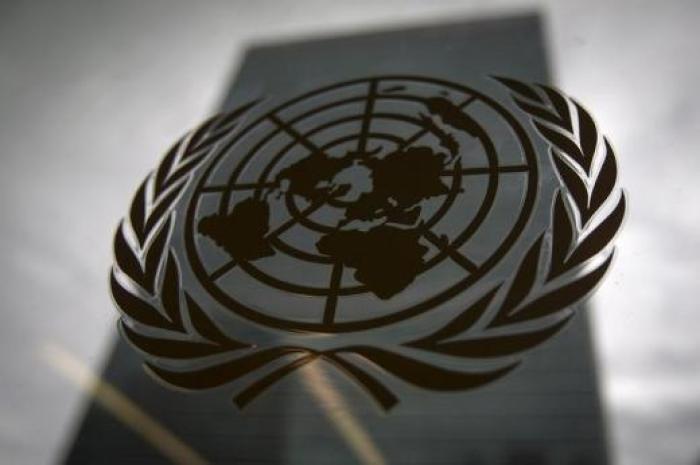UN agency publishes guidance pushing ‘controversial' sex education

The United Nations Population Fund has released new guidance on comprehensive sexuality education, providing a sex education framework for school-aged children outside of the classroom setting. But some have raised concerns over it.
Dr. Rebecca Oas, director of research for the socially conservative Center for Family and Human Rights, believes the “International Technical and Programmatic Guidance on Out-of-School Comprehensive Sexuality Education” is part of an effort to ensure that students around the world “receive the U.N.’s controversial sex education, wherever they are.”
“This particular guidance is about taking that type of education and packaging it in ways where it can be given to students both outside and inside the formal education system,” she told The Christian Post. “If you’re a parent who keeps an eye on these things in school and maybe opts your child out of a … class where they’re going to be teaching things that you don’t agree with but then you send them to a summer camp … and they receive that same education there, it’s … about making it that much more inescapable.”
“One of the major problems with this is that comprehensive sexuality education is trying to teach a comprehensive education through the realms of sexuality as opposed to teaching a comprehensive education of which that is a part. Not everything comes back to that,” she explained.
“But in the end, really, what it comes down to is we need parents to be aware and be vigilant, to decide what kind of influences their children … are receiving and to remember that they as parents are the primary educators of their children.”
The guidance is not binding on any country, she noted, and is “more a matter of giving suggestions that people who like the type of educational materials can pick up at the local level as well as at the government level.”
While acknowledging that “the family plays a significant role in educating children and young people about sexuality” and that parents “prefer to be the source of information on sexuality,” the U.N. guidance contends that “parents or guardians often lack the competencies to provide evidence-based, age-appropriate sexuality education to their children.”
“Parent-focused” approaches to sexuality education are offered as a remedy, where “parents/guardians are educated or trained to provide sexuality education to their own children.”
After listing a variety of scenarios where parents/guardians learn comprehensive sexuality education alongside their children and/or train other parents in such curriculum, the guidance expresses concern that parents “wish their children to conform to prevailing gender norms (which are usually unequal),” stressing that “programmes must therefore help parents/guardians to model more equal gender attitudes and norms.”
“Out-of-school CSE can also include challenging topics and promote a rights-based approach rooted in gender equality and empowerment in a way that may not always be feasible or acceptable in school settings,” the guidance suggests. “Out-of-school programmes may be better able to provide sexual and reproductive health commodities and link children and young people to services, mentors and other forms of support.”
The guidance suggests that out-of-school comprehensive sexuality education can contribute to “broader goals” such as “contributing to policy change” by influencing governments to pass laws ensuring “young people’s access to sexual and reproductive health services.”
When laying out “approaches to teaching and learning” that facilitators can use when teaching, the guidance suggests “critical pedagogy” as an empowerment approach that can “empower children and young people” belonging to “oppressed groups.”
A glossary definition describes “critical pedagogy” as “a teaching approach, based on the work of Brazilian educator Paulo Freire, that guides marginalized or oppressed learners to question and challenge prevailing power dynamics and domination and empowers them to take action to change their own situations.”
According to Oas, Freire was a “Marxist scholar.”
The guidance provides targeted sex education curriculum for gender-specific groups, young people with disabilities, young people in humanitarian settings, young indigenous people, young lesbians, gays and bisexuals, young transgender people, young intersex people, young people with HIV, young people who use drugs, young people who sell sex and young people in detention.
Those teaching transgender youth comprehensive sexuality education are advised to label diagrams of the male and female anatomies “inclusively” by not using gender-specific language and not assigning body parts to one particular gender. Oas, a former practicing biologist, referred to that provision of the guidance as “off-putting.”
The guidance rejects the idea of gender as a biological fact, with its glossary defining gender as “socially constructed characteristics ascribed to women or men, such as norms, roles, attributes and relationships between groups of women and men and girls and boys,” adding “these characteristics are learned through socialization processes.”
“All out-of-school CSE programmes should include content to promote understanding of gender, diversity and human rights to challenge harmful gender stereotypes based on sex, sexual orientation and gender identity,” the guidance asserts. “Gender identity” is defined as “a person’s deeply felt internal experience of their own gender, which may or may not correspond with the sex assigned to them at birth.”
Estimates from the United Nations Educational, Scientific and Cultural Organization finding that “globally 263 million children are out of school, including 63 million children of primary-school age, 61 million of lower secondary-school age, and 139 million of upper secondary-school age” were cited as the justification behind the need for out-of-school sex education.
Possible settings for out-of-school comprehensive sexuality education include community organizations, health clinics, summer camps, religious institutions, families, workplaces, jails and detention centers as well as refugee camps.















![[Ready to PUB] Christian psychologist: Kids must develop 'resilience' to fulfill God's purpose for them](https://cdn.christianpost.com/images/cache/thumbnail/25/92/259219_a_300_200_658_146.jpg)











